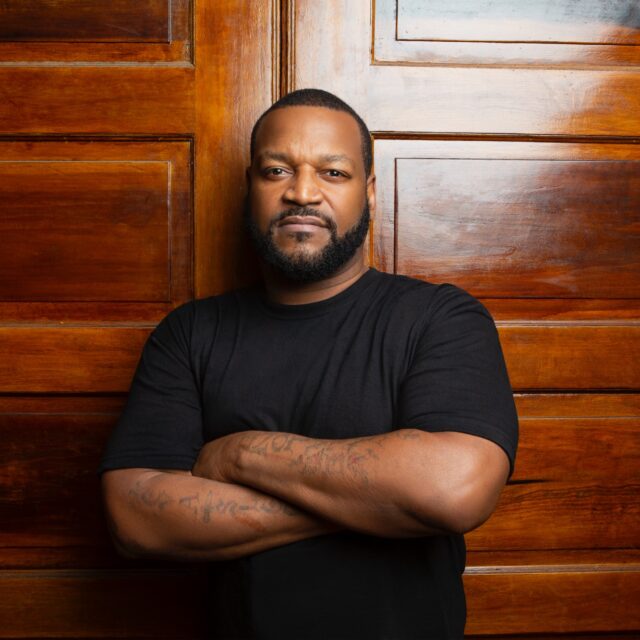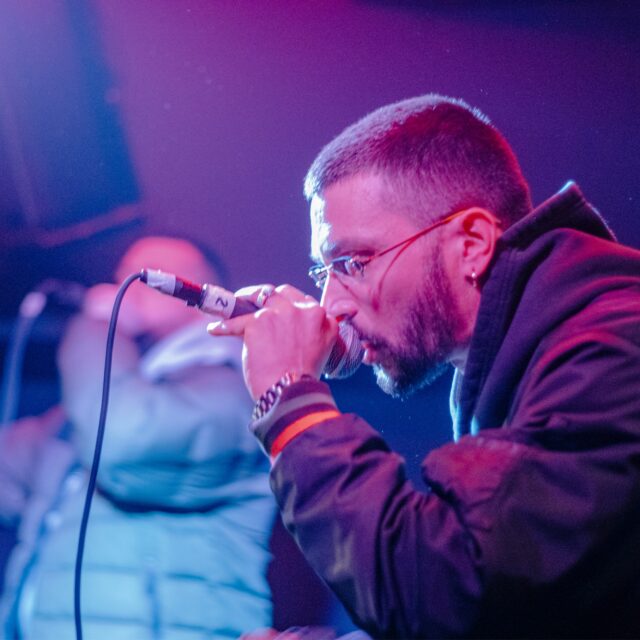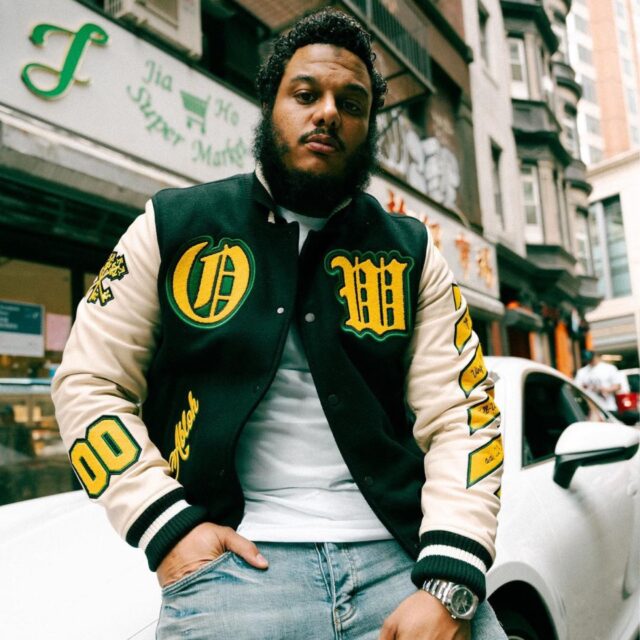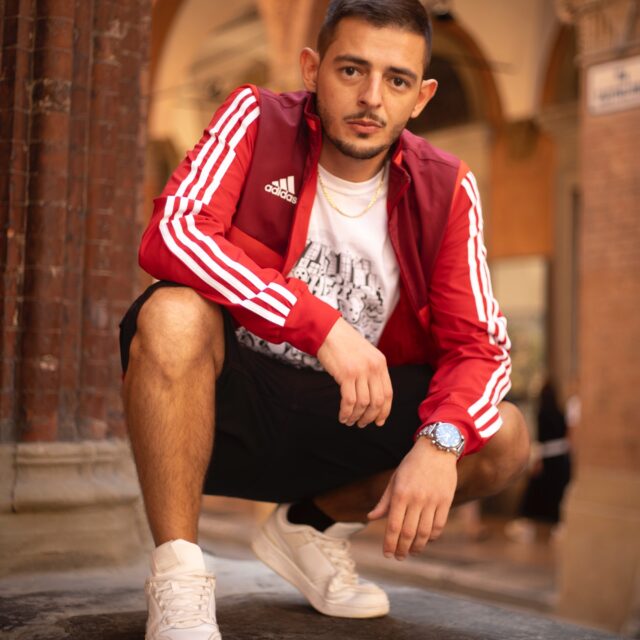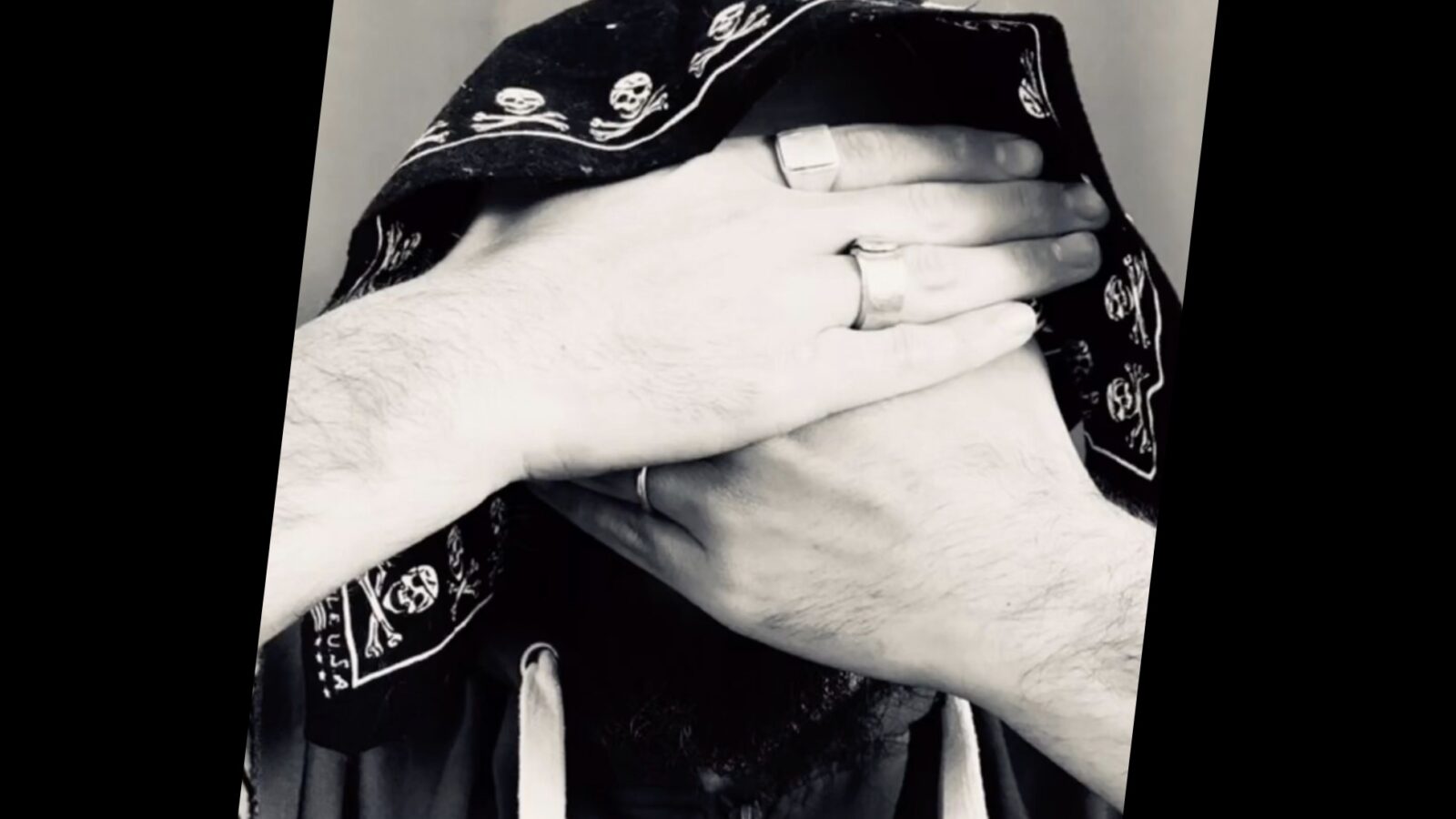
Who is Poppa Gee?
We had an interesting conversation with the mysterious underground rapper from Milan, Poppa Gee, who makes of the attitude and hardcore mentality, typical of the graffiti scene and the Milan 90s Hip Hop school, his flag.
Yo Poppa G, it’s with great pleasure that we have been able to reach you for some questions, as you have been a really pleasant surprise and you are representing a sort of italian rap “best kept secret”, wrapped in a great aura of mystery.
Indeed, since you have emerged on our radar from some meander of the web with your previous acronym of Young Pope, promoted on Youtube by an Italian Rap legend as Esa, we wondered where you came from and who you really were.
The mix of “hardcore” and underground hip hop themes and sounds, plus precise references to the Old school of Milan and the world of graffiti, with a tone of voice and the mastery on the microphone of an expert MC … have sparked several discussions about your real identity. Can you tell us where your strategy or need to keep this mystery about your identity come from? Is it maybe related to your connection with the graffiti scene?
Poppa Gee: “The choice of anonymity has several underlying reasons: first of all, the desire to favor the musical aspect rather than the public image. Granted that everyone is free to do whatever they want with their art and body, it seems to me that today there are many rappers who spend more time in photographic studios, or behind the camera of a smartphone, than in the recording studio. The promotion of a record has become more important than the record itself.
More often behind great advertising campaigns are hiding bad records. Not infrequently, the relationship between media exposure and project quality is inversely proportional.
Secondly, those who do not live on music and have a job cannot always afford to freely use their image without repercussions: especially if they do not sing songs about flowers, beaches and betrayals
Your rhymes are, indeed, full of references to the world of graffiti writing and the Hip Hop old school from Milan: What can you tell us about your connection with the Milanese graffiti scene and within the “old school” ?
POPPA GEE: “My first contact with Hip Hop, as I have already mentioned elsewhere, happened thanks to graff writing. In ’94 a school friend of mine showed me a fanzine called “Tribe” ( by the way, one of the most powerful and stylish magazines about the graffiti phenomenon). I was in the seventh grade. I immediately immersed myself into that world of lines and colors.
My friend gave it to me as a gift and I started copying and recopying it in every single detail. A few months later, the same fella told me about rap. With him, who had failed classes several times and was therefore older than me, I went to the Wag shop. There I bought other fanzines, caps and saw the first boys with baggy pants and xl sweatshirts with hoodies.
Since then I have been looking for more infos. With some friends, after-school, we went in search of tags, throw ups and walls almost everywhere in the north / north-east suburbs of Milan: Sesto San Giovanni, Cologno, Vimodrone.
We started hanging out at the different places mostly frequented by writers, bboys and skaters. Slowly everything began to take a more and more defined shape and above all I realized that there was a connection between the various Hip-Hop disciplines.
Furthermore, and fortunately, I lived at the time in a house located along the railway line so that I was able to witness the explosion of writing on metal. From then on, graffiti writing involved me for several years.
To be honest I have never been a bomber, rather a “hall of fame graff writer”. The dimension of conviviality that painting together has always attracted me: the spirit of the jam, the chilling around…
Even today I feel more comfortable among writers than among rappers. It is, I think, a question of mentality”.
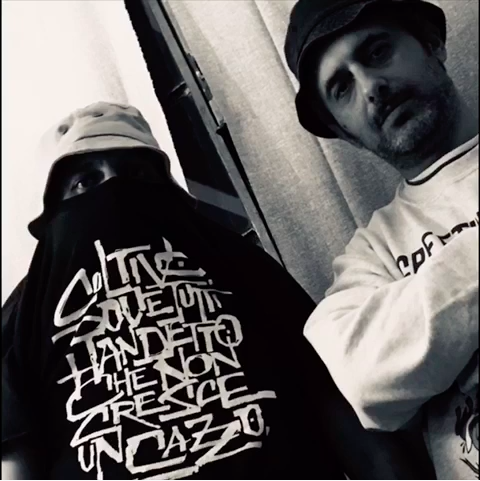
As we said we discovered you thanks to Esa who pushed and produced you, ( as Captain Futuro) in 2018. How did you meet each other?
POPPA GEE: “To me, Esa always has been someone to look to. I listened to his music a lot. About ten years separate us and yet I have always looked at him as an example. Already in the 90s it was light years ahead. In my opinion, to limit ourselves to the musical aspect, he is one of the most powerful rappers that Italy has ever had.
Almost three years ago, after recording Holy Shit Mixtape, I contacted him to try to do something together. We started with a song and then, over a few months, we recorded several EPs and some singles. I already had many lyrics written and working with him stimulated me further. I learned a lot. When you are dealing with the legends of this culture you cannot afford to not give your best. We did some real night recording marathons.
In some cases I was also lucky enough to witness the production of the beats that we would soon use. Even if lately it is not easy to meet, we often meet to exchange opinions and advice on music.”
In your songs, you do not hide the nostalgia for that underground, hardcore attitude of the ‘90s Hip Hop, compared to today’s, in which, on the other hand, social media appearance counts more than rap and style. It seems in your rhymes you have the need to vent against this system, as if it had robbed you of something that went far beyond music…
What and who prompted you to take (or take back) the microphone in your hand to “remove a few stones from your shoe”? How and why, in your opinion, has the panorama of the Italian rap scene evolved (or convoluted)? On the other hand, what can be said to have made progress from your point of view?
POPPA GEE : “First of all, I have always liked rap which talks about rap or, in a broad sense, of what has to do with Hip Hop culture, its various disciplines, its history. I like verses in which there are quotes, references, dissing.
I come from the 90s era: I listened and continue to listen to the music of that decade as well as that of the early 2000s. It does not mean that I am unable to appreciate what was done later, on the contrary. I listen to everything and then I filter: I take what stimulates me and I discard what bores me.
In this sense, the references I make in my tracks to some Italian and international Hip Hop icons should be read both as a tribute, a praise, and as a clear desire to claim continuity between what once was and what today there is… Shortly, more than talking about old or new generations, I’d rather talk about good or bad music”
“I started to make my music when I started to like less what I was listening to, around me. My goal has always been to show other rappers, not to a talent show audience, how much I’m worth: My music may not be for everyone, but only for those who were and still are on this journey today, who have certain values, a certain type of background and above all a certain type of vision.
I also know that this way of reasoning represents a limitation for many. What can I say? They should listen to other stuff.
The Italian scene, like all the others, is really various”.
Today there is room for everyone. There are many powerful artists, some even very young and unknown. Tools and technology have speeded up everything in a surprising way: you can do in a week the work that previously took a year.
This means that the competition is incessant and the turnover is continuous.
As far as I’m concerned, aside from some critical aspects (not because everyone can make music they must necessarily make music), it’s good.
To give an example, some non-mainstream artists, sometimes independent, but still valid, are releasing six or seven albums a year, profoundly transforming the game from below. Who, under the wing of a major, was used to being satisfied with a wack album every three years, today has to work if he doesn’t want to be left out”.
Without a doubt, listening to your music, We can feel not only the influence of 90s rap, but also the impact of the American underground Hip Hop movement, revitalized in recent years, thanks to people like Roc Marciano, first, and Griselda, then, who have broken a breach into the mainstream’s matrix…
How did it influence you and what idea do you have about this “renaissance”? Do you think that even in Italy there is any space in the market for the underground scene? What are the Italian rap albums you have listened to the most in 2020?
POPPA GEE: “For those who listen to American rap, and it’s not quite as obvious as it might seem, in my music the influences you mentioned, along with many others, are evident: from Marciano to Conway, from Estee Nack to Pounds 448, from God Fahim to Eto , passing through Al Divino and Your Old Droog.
Now if it is true that they are all promoters of an underground sound, sometimes more in terms of approach than numbers, it cannot be said, however, that from a strictly artistic point of view, they are an absolute novelty.
And I say it in a positive sense”.
To give some examples: in the Griselda records I find very much the Wu Tang Clan; as for the sounds, lyrics or attitude. (It is no coincidence that some members of the Wu Tang, as if to underline a certain affinity, collaborated with the members of Griselda). In the hallucinated and psychedelic journeys of Al Divino I see a lot of MF Doom.
The line that links Your Old Droog to Nas is evident. As I said above, all these artists have taken a lot from the classical traditional rap and then reworked it. Knowing it helped me appreciate them even more. Honestly, I see them in the sign of continuity, more than in that of rupture. In this sense, I cannot say whether the term “Renaissance” is the most suitable. Today they are the new classics. If they have managed to create their own space, it is because the field in which they play has already been prepared by those who preceded them”.
By the way, you recently came out with a single along with another underground rapper from Milan, Jangy Leeon, how has this collaboration been born? And what other projects will you come out with next?
POPPA GEE: “I recorded a lot in the studio of Jangy Leeon and Jack The Smoker. After two years of sessions, they probably began to appreciate what I was doing and see the evolution of my path, and we collaborated. The track with Jangy, produced by Gio Lama, is called “’96 Mentality”, while to stay at home Caveau Studio, the song with Smizy, produced by Jaybee Vibes, is called “La crew di giù”.
Everything happened organically, for the pleasure of making music together and feeling good.”
Another main trait of yours is certainly the fact of being an extremely prolific rapper: last year you released many projects, working, above all, with only one producer at a time, such as Mr. Phil, Fat Fat or Gio Lama… Why do you have this predisposition to work with only one beatmaker at the time? What makes you so constant and prolific? What is your approach in the recording studio?
POPPA GEE: “The EPs with Fat Fat Corfunk, Mr Phil and Gio Lama are my latest bigger projects. In all three cases, as you have rightly noticed, the so-called mc / producer formula is present. But if we go back in time, you will see that this has been true since my beginnings: I am referring to the dozen EPs made together with Esa or Looppolo.
It is a constant of my path. The reasons are, of course, many: the first, the most banal, is that I like the “sound”, in a broad sense, of each of the producers with whom I have worked up to now”.
Since this “sound” has a history that is affected by certain influences that each time lead to different outcomes, I find it stimulating to explore it fully, to grasp every nuance. Obviously, according to my potential and my very personal tastes.
It is a pleasure and at the same time an exercise that pushes me to test myself and improve myself. It goes without saying, therefore, that , in my intent, a song is not enough to succeed.”
“At the end, each EP reflects a certain moment. Not from a biographical point of view but, more properly, from the writing aspects of it. Basically, I never have a pre-established plan: I write one text after another and as I proceed I see a possible design. When I feel that the circle has closed the album is ready. Sometimes this approach of mine has proved successful, others less so. As I don’t make music as my full time job, I can allow myself to “make mistakes”. I don’t have to respond to anyone but myself and the friends I work with.”
“There is a difference, on a strictly technical level, between the first and the last projects and it is exclusively due to the emergency in which we find ourselves today. With Esa and Loppolo we went to the studio together. “Milano Non Esiste”, “The Hiroo Onada”, “A Dio Piacendo”, instead have been done at a distance. That said, the love, commitment and energy lavished are the same as always “.
By now it seems that you are really enjoying it , as you wanted to break through some gates, or force some grates to enter “the game” and expose some “toys” … What are your plans for 2021? Can you give us some details of your next projects?
POPPA GEE: “I have some work already started or almost completed that will come out in the first half of 2021. I also have some situations with some kings that I prefer not to talk about until they see the light. As they say: the best record is always the one after! ”



